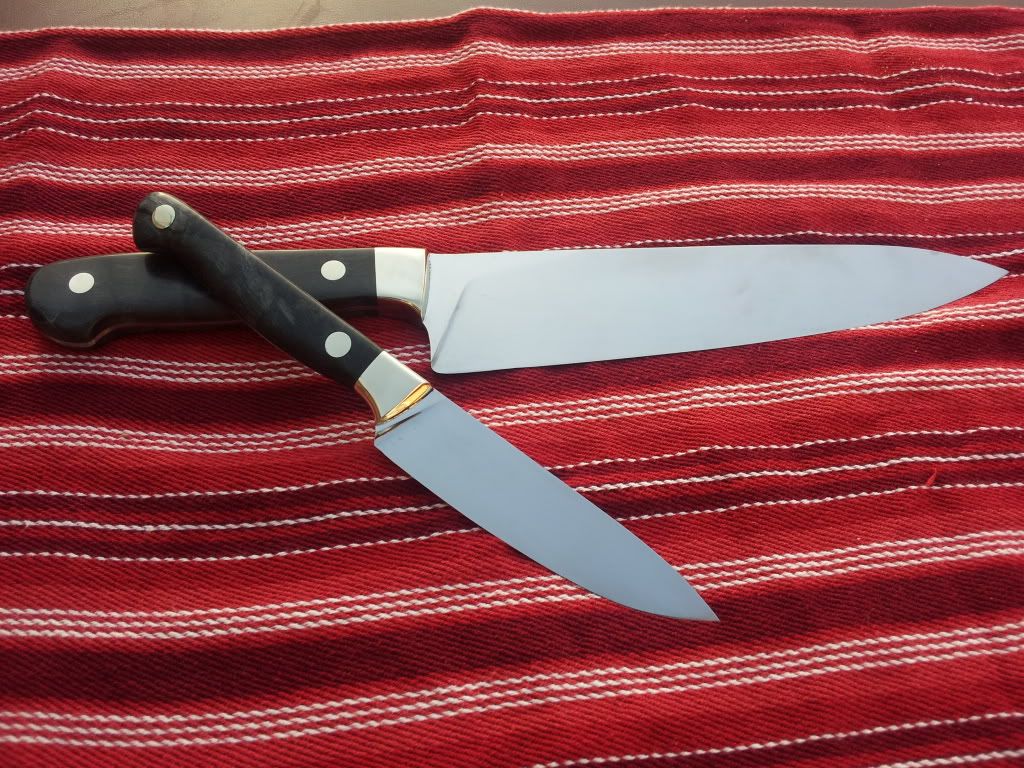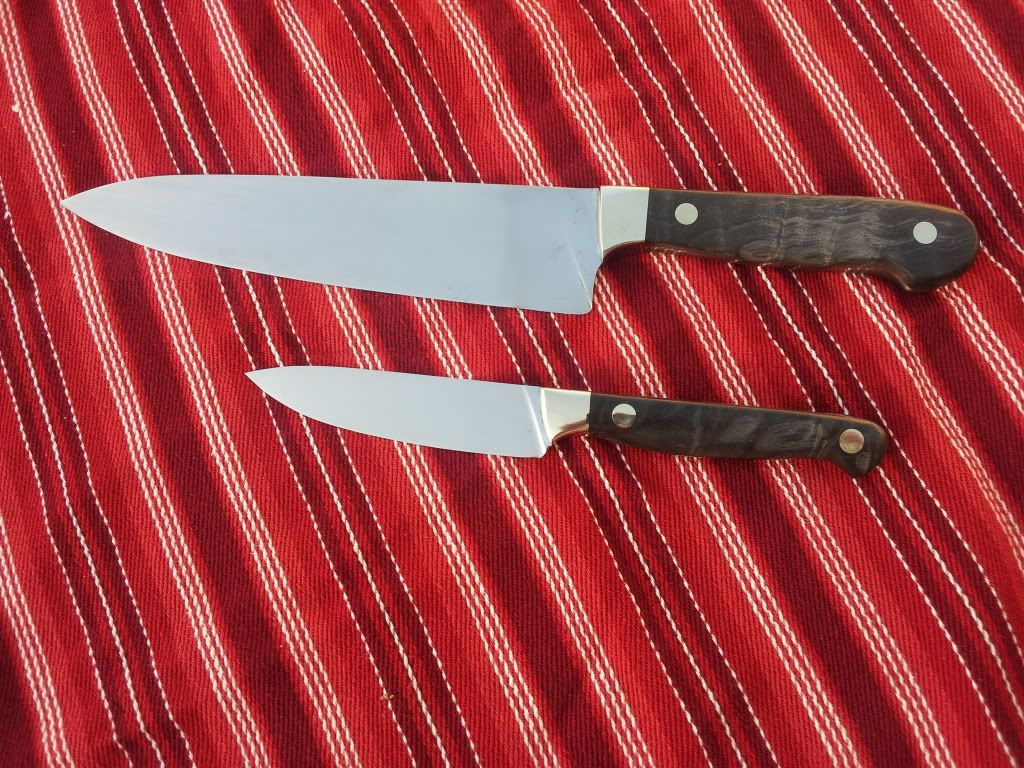Jason Wilder
Well-Known Member
I am in the process of finishing my first Gyuto (chef) and Pearing knife and did them both with a full flat grind with distil taper, but would like to try something different with my next kitchen blades
I would very much like to practice traditional Japanese grinds and need to be educated.
Here is a diagram I just drew and would like to know which to use for which knives

Unless I am mistaken I should have used the type of grind in figure A which begins with a full flat grind to about 1/3 of the thickness on either side, then a second bevel that begins about 1/3 from the edge. Does this make sense?
When would the grind in figure B be used?
My next project will be a Nikiri but am not sure which grind to use? I'd love to hear your thoughts, and please correct me if I mislabeled these grinds
Thanks,
Jason
I would very much like to practice traditional Japanese grinds and need to be educated.
Here is a diagram I just drew and would like to know which to use for which knives

Unless I am mistaken I should have used the type of grind in figure A which begins with a full flat grind to about 1/3 of the thickness on either side, then a second bevel that begins about 1/3 from the edge. Does this make sense?
When would the grind in figure B be used?
My next project will be a Nikiri but am not sure which grind to use? I'd love to hear your thoughts, and please correct me if I mislabeled these grinds
Thanks,
Jason


